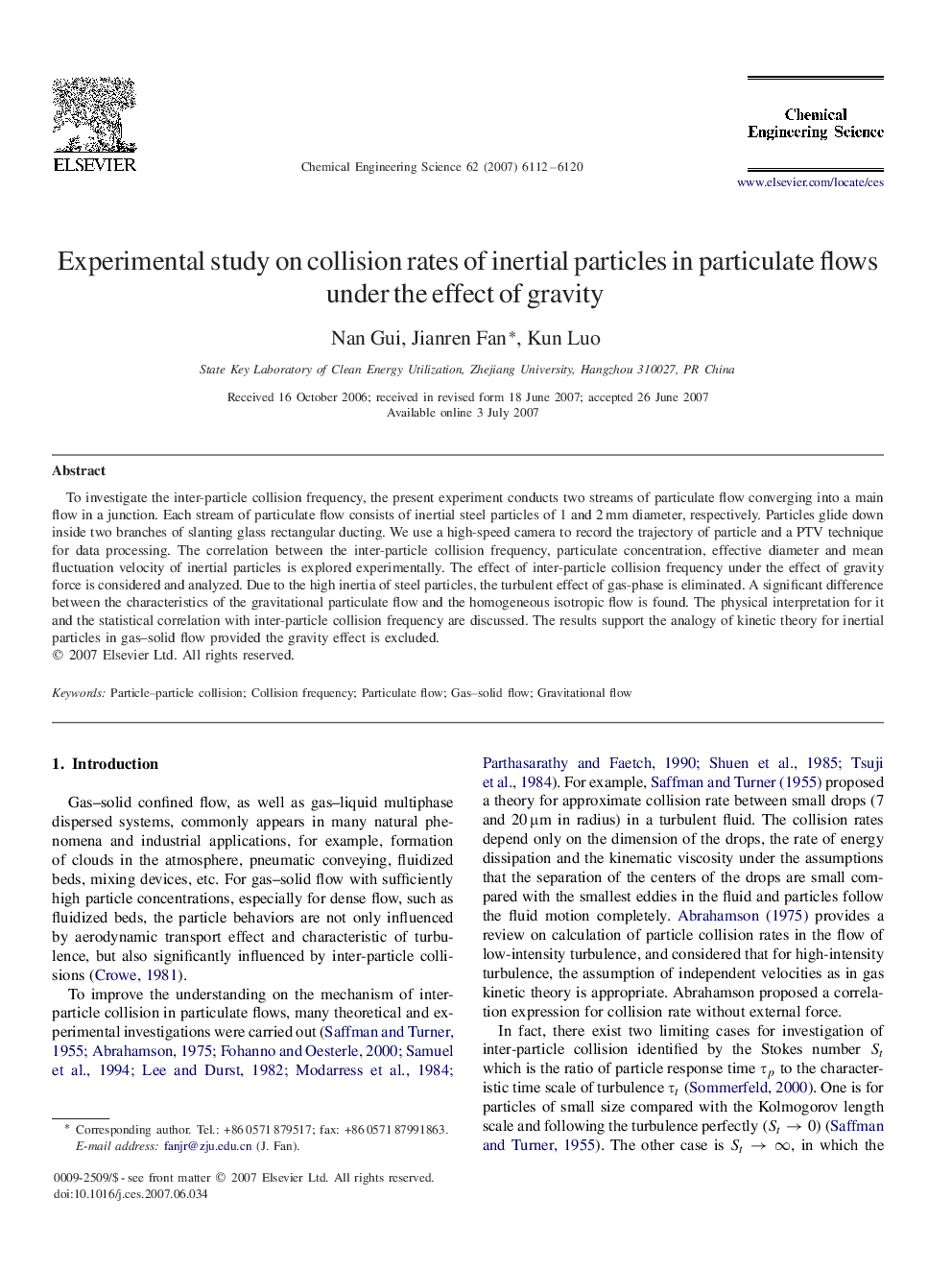| کد مقاله | کد نشریه | سال انتشار | مقاله انگلیسی | نسخه تمام متن |
|---|---|---|---|---|
| 158574 | 457013 | 2007 | 9 صفحه PDF | دانلود رایگان |

To investigate the inter-particle collision frequency, the present experiment conducts two streams of particulate flow converging into a main flow in a junction. Each stream of particulate flow consists of inertial steel particles of 1 and 2 mm diameter, respectively. Particles glide down inside two branches of slanting glass rectangular ducting. We use a high-speed camera to record the trajectory of particle and a PTV technique for data processing. The correlation between the inter-particle collision frequency, particulate concentration, effective diameter and mean fluctuation velocity of inertial particles is explored experimentally. The effect of inter-particle collision frequency under the effect of gravity force is considered and analyzed. Due to the high inertia of steel particles, the turbulent effect of gas-phase is eliminated. A significant difference between the characteristics of the gravitational particulate flow and the homogeneous isotropic flow is found. The physical interpretation for it and the statistical correlation with inter-particle collision frequency are discussed. The results support the analogy of kinetic theory for inertial particles in gas–solid flow provided the gravity effect is excluded.
Journal: Chemical Engineering Science - Volume 62, Issue 22, November 2007, Pages 6112–6120